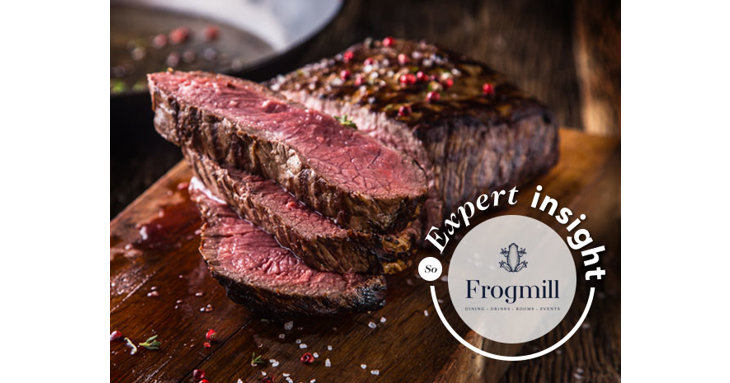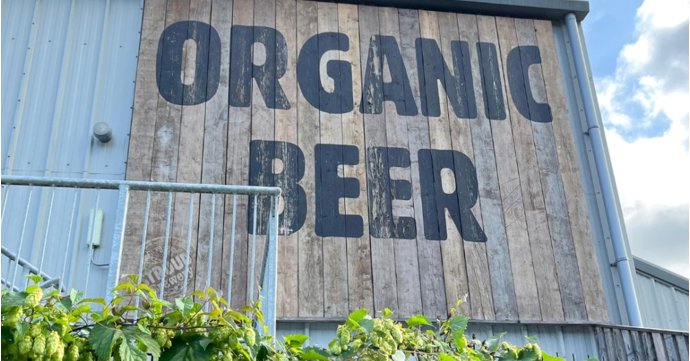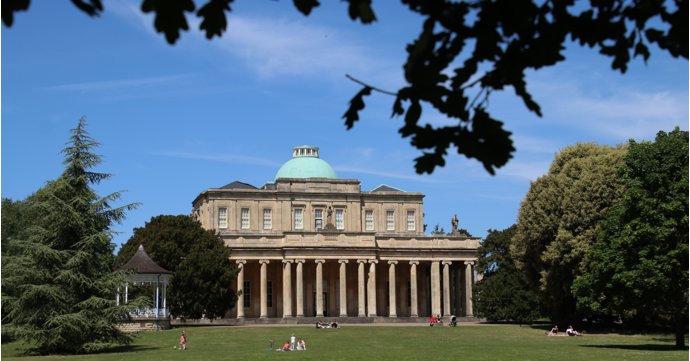With Valentine’s Day just around the corner, many loved-up couples will be making their way to Gloucestershire’s most coveted restaurants in search of the perfect steak.
But if you want to avoid the crowds, or just learn how to recreate restaurant-quality dishes at home, SoGlos chats to head chef of The Frogmill, Jonathan Pons, to pick up expert tips on how to cook your steak to perfection.
Where should people start when picking a steak to cook at home?
I think it’s massively down to the quality of the meat. You can do anything to any kind of meat and if the quality and flavour isn’t there, you’re just not going to get the best results.
The thing you need to look for first of all is the fat – it needs to be a very clear white. It shouldn’t look discoloured or milky, and you should be able to see marbling in the meat too, so that’s the small lines of white running through it.
The best steak I always find is a rib eye. It’s got a really great mixture of the fat running through the meat and great flavour.
The next thing to consider is the colour. If you’re looking at something that’s the colour of pork, don’t buy it – it’s not going to be great! You want something that’s a deep red colour that shows the ageing of the meat, which means it’s had time to develop and the flavour will be more intense.
What about in a restaurant, is the most expensive always the best?
It can be quite different in a restaurant because you don’t know the quality of meat they’re buying.
Sometimes people think that the most expensive is the best, but personally I think people need to do their research, and form a relationship with the places they go to eat steak. Whether that’s through reading reviews on TripAdvisor, or being recommended by friends, it’s important that if you’re spending money on steak, you enjoy what you’re paying for.
How thick should a cut of steak be ideally?
We cook on a Josper at The Frogmill, (a combination grill and oven that works like a really hot indoor barbecue.) Because of the way it cooks we have to use quite thick cuts, like a cross between an Aberdeen Angus and a Dexter.
In the UK meats are hung well, and it’s quite an old-school method for ageing meat, whereas abroad they tend to vacuum pack their meat which keeps it for much longer and actually it can go really tender when cooked properly.
So, where your meat is from can make a difference to how thick the cut should be and also how you should cook it.
What are your thoughts on people asking for steak well-done?
I stand by the theory that whatever kind of steak you have, whether it’s rare or well done, it should take the same amount of time to cook. It’s the resting that’s really important.
For example, our rib eye is usually cooked for about 10 minutes. If a customer wants it rare, we cook it for two minutes, and rest it for eight; if they want a well-done steak, we cook it for eight minutes and rest it for two.
That resting stage is really important and will help create a really tender steak, no matter what your preference is on how it’s cooked. When it comes to people having it well-done, I don’t think it’s that they don’t want a great steak; they just don’t want a bloody mess around it!
Even when you’re having a great medium rare you want to cook it quickly, allow it to rest properly and then reheat it before you send it.
What’s your advice for people cooking steak at home?
You can actually buy quite cheap temperature probes online. They actually have a list of all the different cooking temperatures on them, so you know when to remove something from the heat.
But when you’re cooking something as small as a steak you need to be aware that once you’ve got the meat to the right temperature and take it off the heat, it’ll continue cooking.
My advice for people cooking steak at home is to cook it to the stage before they want it and then remove it from the heat and allow it to carry on cooking as it rests.
So, if you want something medium-rare, cook it to the rare temperature, then remove it from the heat and rest it, and if you still think it needs a bit extra then you can just pop it in the oven for a bit to get a bit more heat into it.
But once you’ve overdone a steak there’s no going back! It’s quite a balancing act, and a minute can be a long time depending on the thickness and cut of the steak.
As an example, a rib eye is a soft meat and therefore the heat penetrates it much quicker, and it doesn’t take so long to cook, whereas a rump can take much longer.
Is steak a speciality at The Frogmill?
We’re really lucky that we cook on the Josper. It cooks at between 350 and 450 degrees centigrade. It works by encasing all the flavour into the meat and reduces cooking times massively. Because it’s cooked over coals, you get a lovely barbecue flavour too.
For more information see “The Frogmill”: https://www.soglos.com/hotels/34502/The-Frogmill, call (01242) 386364 or visit thefrogmill.co.uk directly.


















